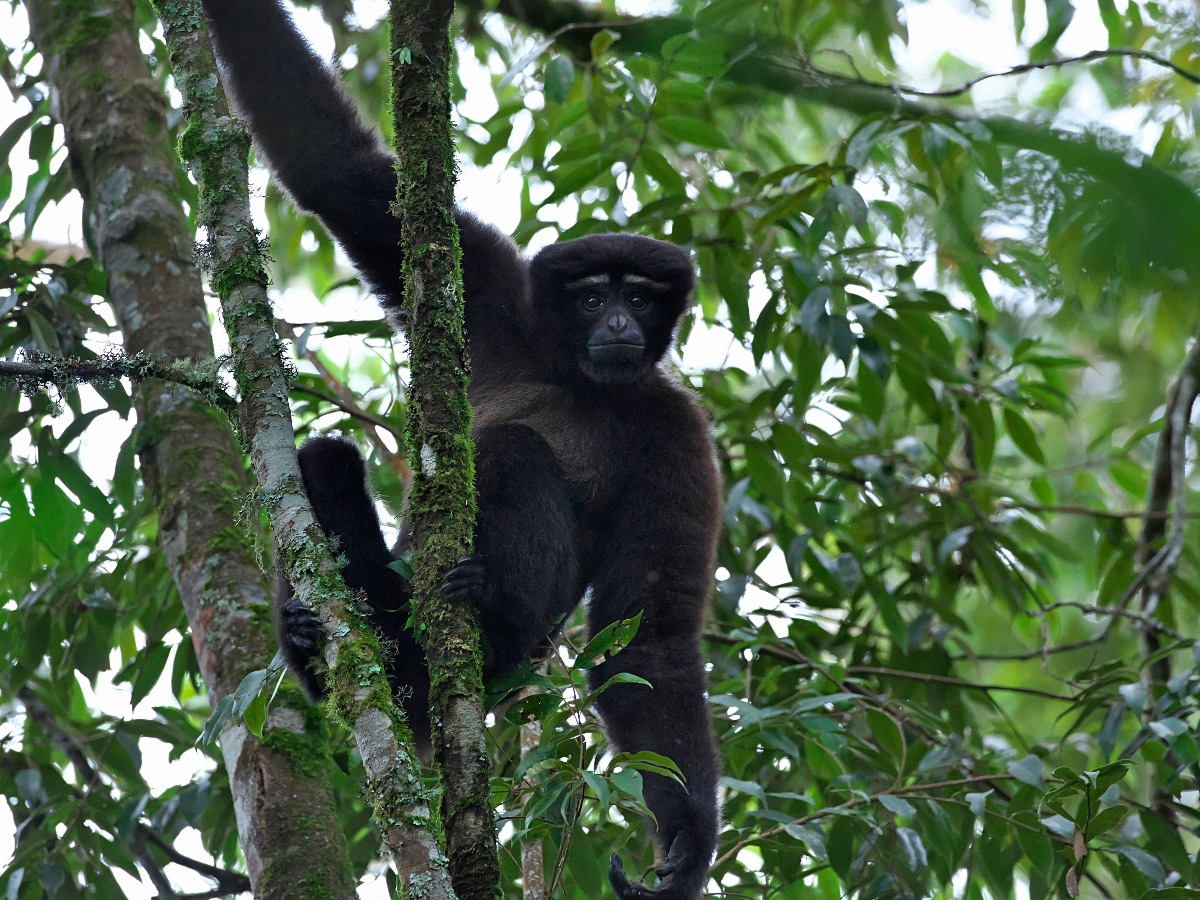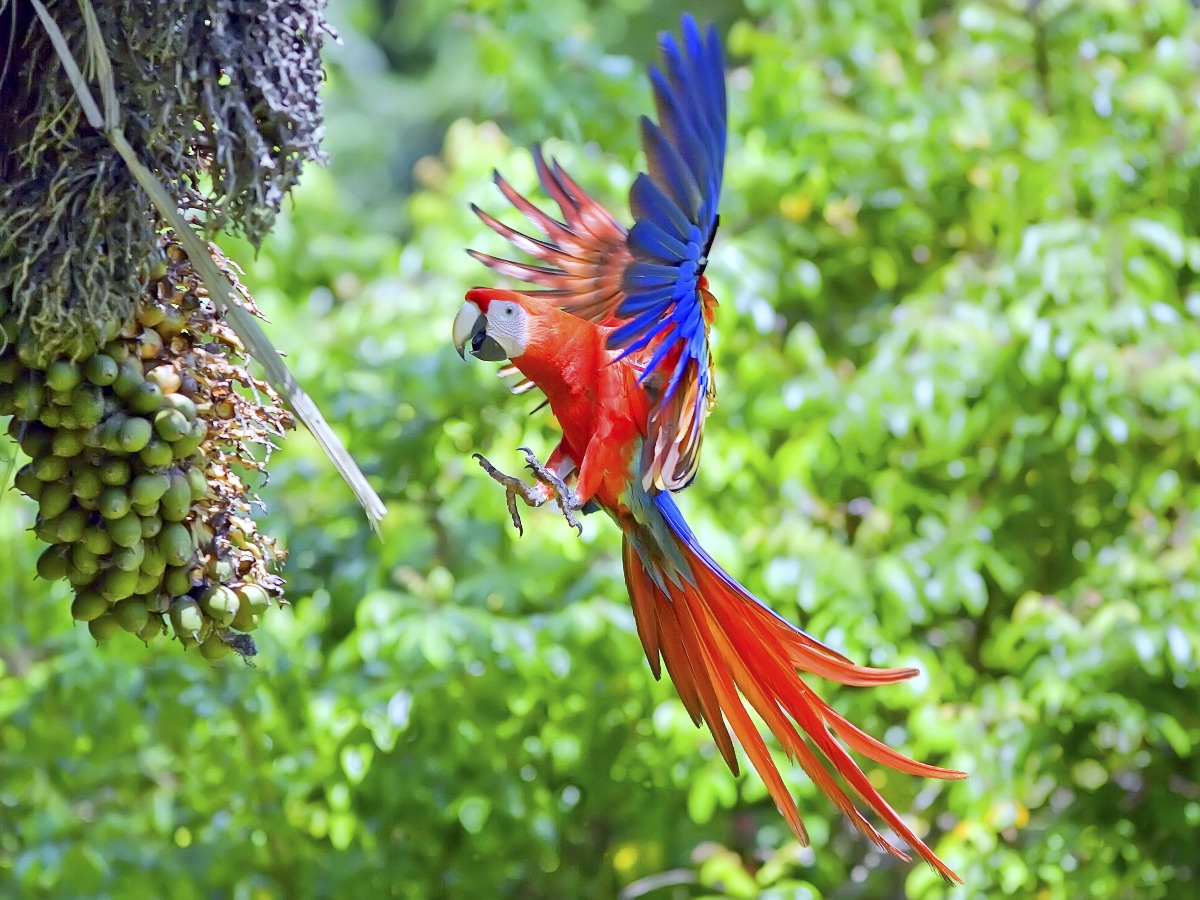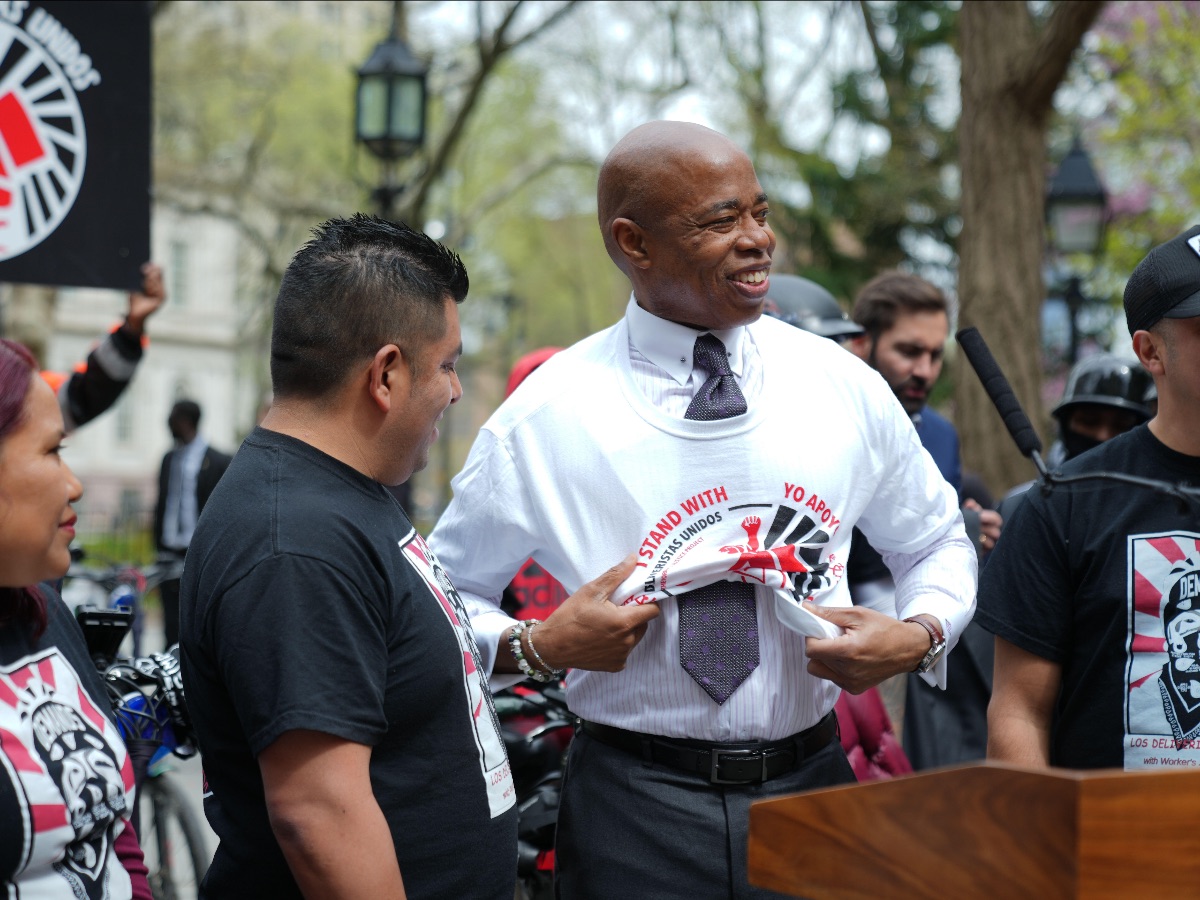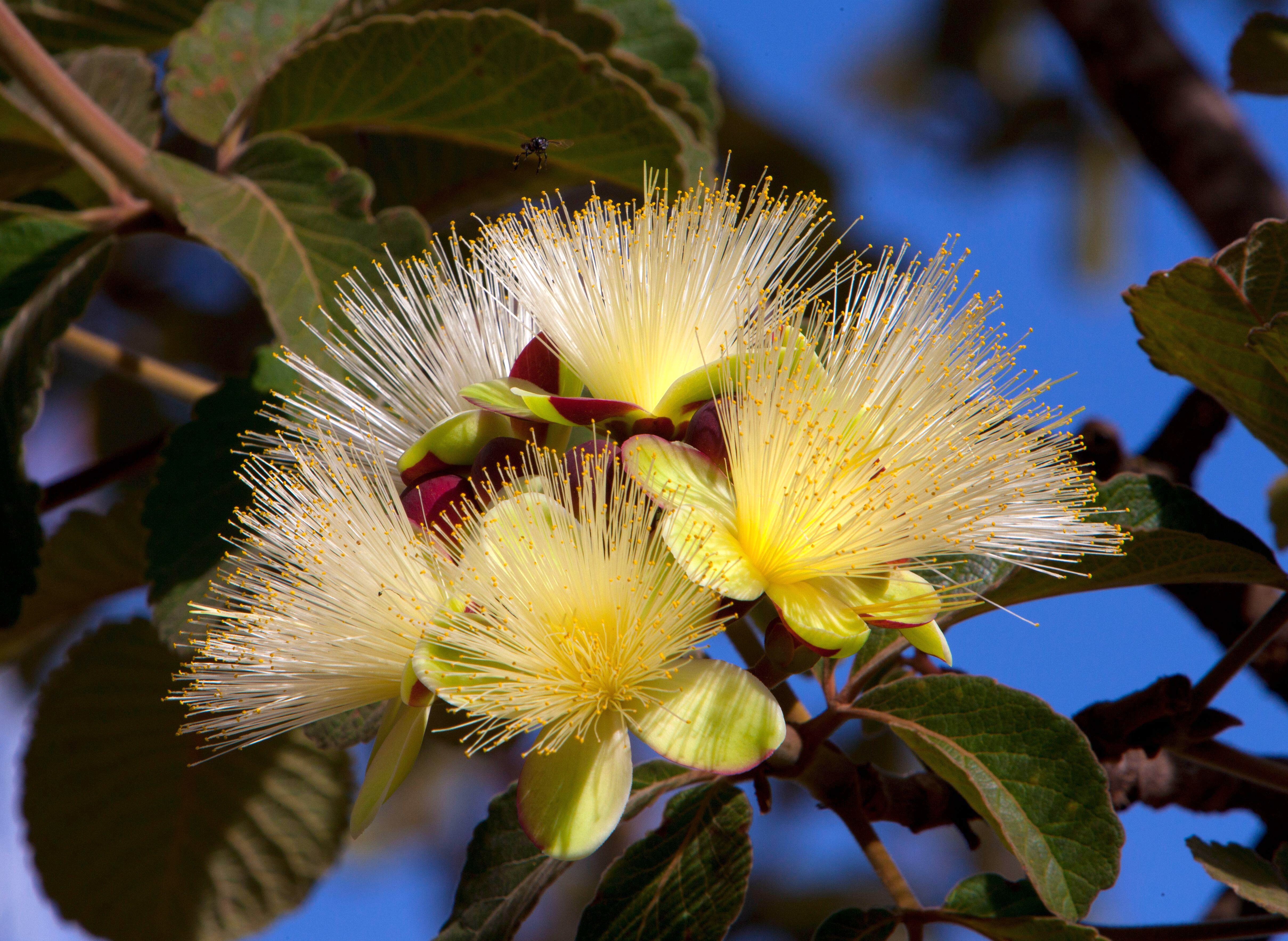 Seed Banks for Ecoheritage • Anna Steltenkamp
Seed Banks for Ecoheritage • Anna Steltenkamp
What role do local seed banks play in restoration amidst an age of corporate biopiracy, industrial monocultures, and biodiversity loss? In the words of eco-activist Vandana Shiva: “When you control seed, you control life on Earth.” The Ethiopian Biodiversity Institute, founded in the early 1980s, was the world’s first established living seed bank, in which storing seeds means keeping them alive and growing rather than bunkered down in a vault. More recently, Indigenous communities have been creating seed banks to support their reforestation work in Brazil’s soy belt. These local initiatives unite subsistence farmers and traditional stewards to exchange wisdom and ensure shared access to native species. In Brazil, communities use a specialized reforestation method called muvuca, spreading a varied mixture of native seeds across degraded lands in a way that imitates the natural forest. This method can yield between 5,000 to 12,000 species per hectare, offering a promising vision amidst projections that the Amazon may face a 58% decline in tree diversity by 2050. Seed stewardship also sustains cultural heritage and food sovereignty, honored as a sacred life source in many traditions. Winona LaDuke speaks to this significance in her TEDx talk entitled “Seeds of Our Ancestors, Seeds of Life.” You can go further into “deep and integrated seed literacy” through Rowen White’s Seed Seva seasonal mentorship.
 Regeneration in the Midst of Disaster • George Biesmans
Regeneration in the Midst of Disaster • George Biesmans
Contexts of disaster and conflict are not commonly viewed as places where regenerative solutions can thrive. Meeting basic, urgent human needs often means favoring short-term, emergency thinking over more regenerative, systemic responses. But that is starting to change. A recent pilot project led by the Gaza Urban and Peri-Urban Agriculture Platform has been working with refugee families to create rooftop gardens in the Gaza Strip, boost food sovereignty, and foster social regeneration. Their work is supported by Re-Alliance, a global community of practitioners and organizations dedicated to furthering regenerative responses to disaster, displacement, and development. The project is part of a broader program of work on Regenerative Camps and Settlements, which pilots regenerative interventions in camps for refugees and Internally Displaced People. The aim is to build a base of knowledge and learning to promote grassroots, community-led interventions and to influence mainstream humanitarian and development actors to make regenerative responses a core part of their work. In the case of the Gaza pilot project, organizers put together this illustrated guide to support community organizations and actors in leading these kinds of initiatives.
 Big Help for Wildlife • Courtney White
Big Help for Wildlife • Courtney White

|
|
A male skywalker hoolock gibbon (Hoolock tianxing), Yunnan Province, Gaoligong Mountain National Nature Reserve, China.
|
Two recent Mongabay News stories report how a potent combination of technology, scientific grit, land protection, and local community support is helping imperiled wildlife. In the forests of Myanmar, scientists using acoustic monitoring and DNA analysis confirmed 44 populations of extremely rare Skywalker hoolock gibbons. Previously, only 200 individuals were known to exist, all in China. Named in part for the iconic character from Star Wars, scientists described the gibbons for the first time in 2017, and the species is imperiled by hunting and habitat destruction. Interviews with local people revealed their desire for Indigenous- and community-led conservation efforts rather than state-led ones, and studies show that Indigenous-led forest protection indeed benefits primate species diversity.

|
|
The Scarlet Macaw is one of the incredible wildlife species in Osa Peninsula, Costa Rica.
|
In a related story, researchers are using diverse technologies to study wildlife on the Osa Peninsula, located on the Pacific coast of Costa Rica and one of the most biodiverse spots in the world. The goal is to establish effective wildlife corridors and help local farmers and nonprofits document their conservation work. Devastated by deforestation, the Osa has been healing since being granted protection in the 1970s, aided by local communities. Using a new generation of camera traps, acoustic recorders, and thermal drones adapted to harsh tropical conditions, scientists are monitoring rebounding populations of sea turtles, tapirs, jaguars, and spider monkeys. As populations grow, they will need space to roam and corridors to connect them. See Wildlife Corridors Nexus for more information.
 New Washer/Dryer Standards • Claire Krummenacher
New Washer/Dryer Standards • Claire Krummenacher
New washer and dryer efficiency standards recently greenlit by the Biden administration are estimated to save 2.2 billion dollars per year in utility costs and 71 million tons of CO2, the equivalent of the annual emissions of 9 million homes. The standards will achieve this reduction by installing top-loading washers that are 11% more efficient than today’s models and use 28% less water, while dryers will become up to 40% more efficient, depending on the specific model. Although the requirements will only begin to apply to equipment produced after March 1, 2028, it marks the first time that washer and dryer standards have been modified in over ten years due to a delay in review during the Trump administration–a long overdue update given that laundry represents approximately 8% of households’ annual electricity use, and that is before accounting for the energy needed to heat water. To learn more, see Buildings Nexus.
 Micromobility goes Macro • Juliana Birnbaum
Micromobility goes Macro • Juliana Birnbaum

|
|
NYC Mayor Eric Adams joins Los Deliveristas Unidos to celebrate new protections in the food delivery industry that took effect on April 21, 2022 in New York City.
|
When I visited Manhattan for Climate Week last fall, I was surprised to find that the streets of my natal city had a new vibrancy due to micromobility. A catch-all term for small and lightweight vehicles such as scooters, cycles, skateboards, and rickshaws, micromobility has taken America by storm in the past decade, addressing urban congestion, pollution, and emissions. In Reno, Nevada, officials used public input in developing a plan to redesign specific neighborhoods to better accommodate biking and walking, especially near the college. A recent op-ed pointed out that New York City is piloting a web of charging and resting stations for its cadre of “deliveristas,” who use micromobility to deliver food and other items, asking Philadelphia to expand its e-bike charging network. Even car-centric Los Angeles is making way for alternative modes of transportation- an article in the UCLA newspaper last month explored the popularity of Bird e-scooters among students. The scooters appear to be on campus to stay despite the company having filed for bankruptcy in December. Read more about how to support this climate-friendly trend in our Micromobility Nexus.
 New Film on Regenerative Farming Movement • Scott Hannan
New Film on Regenerative Farming Movement • Scott Hannan
The creators of the highly acclaimed documentary Kiss the Ground have just released their latest documentary on the regenerative farming movement: Common Ground. The film tells the story of the many farmers and advocates working to create a new food system where healthy soil, ecology, and people are paramount. The directors/writers/producers, Rebecca and Josh Tickell, became interested in the regenerative farming movement through their desire to help stabilize the climate. Once they discovered that soil quality and healthy food production played an integral role in that process and led to a network of positive outcomes, they devoted their skill as filmmakers to the narrative. They even started a nonprofit advocacy group to help empower regenerative farmers. While offering solutions and inspiration, they wanted to be transparent about the global agricultural industry's challenges– the film tackles the destructive use of agrochemicals, the adverse effects of corporate control of seeds and farmland, and the issue of land equity for black and indigenous farmers. By building awareness among consumers and farmers, we can steer farming in a restorative direction. For more information, see the Regenerative Agriculture Nexus.

|
|
Trailer for the documentary Common Ground, the sequel to the critically acclaimed Kiss the Ground.
|
Take Action on Nexus
Find out how to ensure that girls everywhere can safely access and complete twelve years of free, safe, gender-equal, quality schooling in our
Girls Education Nexus.
Photo Credits
1. Wirestock, Inc. / Alamy Stock Photo
2. Nature Picture Library / Alamy Stock Photo
3. robertharding / Alamy Stock Photo
4. NurPhoto SRL / Alamy Stock Photo
Support our work
We rely on the generous support of our fellow regenerators! Please consider making a one-time or recurring donation to keep Project Regeneration and The Waggle going.
Want the Waggle coming to your inbox instead? Click Here to Subscribe!

 Seed Banks for Ecoheritage • Anna Steltenkamp
Seed Banks for Ecoheritage • Anna Steltenkamp Regeneration in the Midst of Disaster • George Biesmans
Regeneration in the Midst of Disaster • George Biesmans Big Help for Wildlife • Courtney White
Big Help for Wildlife • Courtney White

 New Washer/Dryer Standards • Claire Krummenacher
New Washer/Dryer Standards • Claire Krummenacher Micromobility goes Macro • Juliana Birnbaum
Micromobility goes Macro • Juliana Birnbaum
 New Film on Regenerative Farming Movement • Scott Hannan
New Film on Regenerative Farming Movement • Scott Hannan
